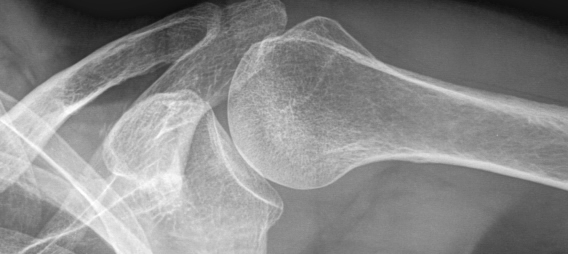Inflammation of tendons: explanation, cause, symptoms, diagnosis and treatment
The shoulder is the most flexible joint in the human body. It is constructed in such a way that we can move the arms to the left, to the right, up and down, to the front and the back and even rotate. Among other things, this large flexibility is made possible by four large tendons in the shoulder. Especially where they run underneath the shoulder blade, these tendons have little space to operate. Therefore, they can easily get irritated or inflamed upon overload at this site. This is called tendon inflammation or tendonitis. A tendinosis is related to this and means ‘degeneration of the tendon’. This can also be accompanied by inflammation, but tendinosis is mainly characterized by the breakdown of fibers in the tendons and tendonitis is characterized by inflammation.
What is a tendonitis in the shoulder?
The tendons in the shoulder connect the muscles to the bones of the shoulder and the arm. These tendons are very strong. They have to be able to catch up the large force of the muscles. Because the strain on the tendons in the shoulder is very large, they run through a fluid filled capsule called the tendon sheath. Tendons have lower blood flow than muscle tissue and are therefore more susceptible to inflammation. Moreover, the fiber-like structure of the tendons is not very flexible. Upon overload, small tears can rapidly occur in the tendon tissue. Although this is also called tendonitis, it is merely a tendon injury (tendinosis).
What is the cause of an inflamed tendon in the shoulder?
The most common cause of an inflamed tendon is overload of the shoulder for instance by conducting repetitive action. One can think of (light) home construction work or occupational activities when irritation emerge, which can result in inflammation. These symptoms can be part of Repetitive Strain Injury (RSI). Small cracks and irritation of the tendons may arise from intensive sporting or an accident. Sometimes a rheumatic condition can play a role in tendon inflammation. In a lot of cases, the tendon sheath is also inflamed.
What are the symptoms of tendonitis in the shoulder?
A tendonitis coincides with a painful feeling. Moreover, the shoulder can be swollen and warm, stiff and hard to move. In some cases, the inflamed tendon can make a soft cracking on crispy sound. This is called ‘crepitus’.
What is the difference between tendonitis and mucous membrane inflammation?
The symptoms of a tendonitis very much resemble that of a mucous membrane inflammation. Mucous membranes prevent the tendon from sanding along the bone. Especially those in the shoulder are very susceptible to inflammation. One can recognize a mucous membrane inflammation by a dull pain. When the pain is sharp, you most likely have tendonitis. These conditions can also occur simultaneously.
How is the diagnosis ‘tendonitis in the shoulder’ made?
The doctor will diagnose tendonitis in the shoulder based on the consult and physical examination. Among other things, the doctor would like to know when the stiffness and pain in the shoulder started, whether you have had an injury or accident and examine the shoulder. In most cases, you will have to move your arms in different positions. Furthermore, the shoulder will be examined for the presence of a ‘painful arc’. During this test, the arm has to be moved side- and upwards at the same time. With a tendonitis, a large increase in pain will be noticed at a lifting angle between 70 and 120 degrees. Sometimes also an X-ray of the shoulder will be made. Sometimes you can be referred to a specialist for an ultrasound, CT-scan or MRI-scan. On the basis of the results of the tests it can be established whether there is no other cause of the symptoms, line mucous membrane inflammation, tendon calcification or arthrosis.
How is a tendonitis in the shoulder treated?
When the tendon is very painful, the doctor will advise to rest as much as possible. When the pain decreases, you will be referred to a physiotherapist. In addition, the doctor can prescribe painkilling medication (paracetamol) or painkilling combined with anti-inflammatory medication (NSAIDs).

Share this page
Tweet

Download for free the booklet ‘Moving without pain’ with a retail value of $6.75 / £4.95.
Any questions? Please feel free to contact us. Contact us.






